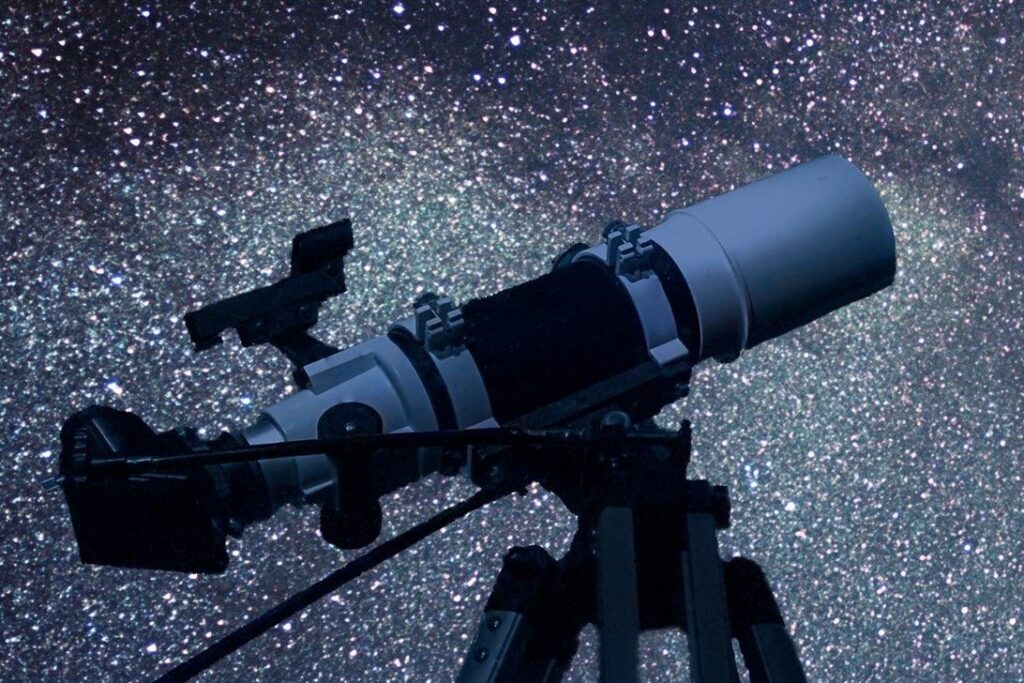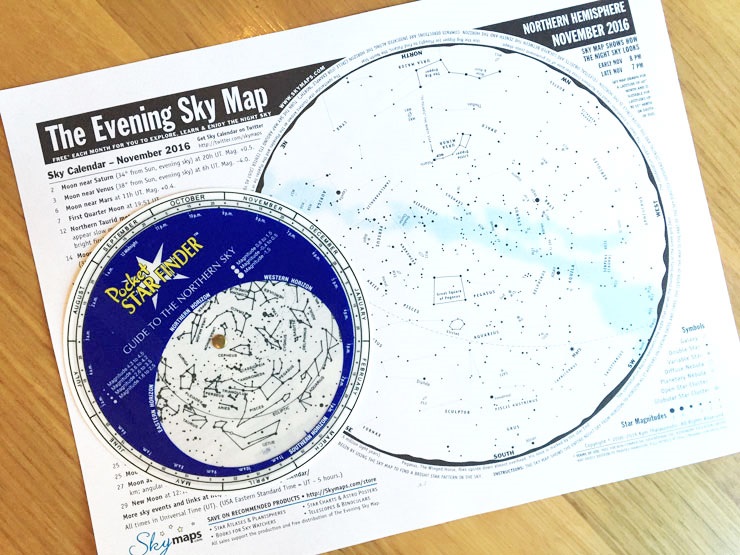From the days of Galileo to stargazing out late at night with your loved one in 2020, a telescope can help open up your eyes and hearts to beautiful things. Stargazing is not only romantic, but it also helps broaden our views. From the moon to the planets to the millions and billions of stars out there, you can begin to familiarize yourself with the sky above you with the best telescope for beginners.
The products on our guide are all under a certain price, so whether you’re on a budget or are on a limited amount of resources to check out the night sky above you, all of these telescopes have what it takes to help you get the view you’ve been wanting to see for ages. In this review, we’re not only going to highlight all the features that make for a quality telescope, like the type, aperture, focal length and ratio, maximum magnification, weight, and warranty, but we’re also going to help you make that decision with our buying guide on which one is best for you. We’ve compiled a list of the best 7 models and found out that the Celestron NexStar 5 SE just tops them all.
More features: StarPointer finderscope, 40,000+ celestial objects stored, alt-azimuth motorized mount, GoTo capable
The Celestron NexStar 5 SE is the perfect beginner‘s telescope. With its orange tube design and easy to use make, it not only is lightweight at only 17 lbs but still has all the latest features for the best stargazing experience.
With 130 mm (5 inch) aperture, you’ll have a great light-gathering experience at an affordable price to fit your beginner stargazing budget. With the 2-year limited warranty, you’ll be able to fully enjoy 40,000 celestial objects with the StarPointer finderscope. Even as a beginners, you can still get impressive views of the moon, planets, nebulas, and so much more.
Even better for beginners, the fully-automated GoTo mount with database of 40,000+ celestial objects automatically locates and tracks objects for you.
The design of the Celestron NexStar 5 SE is also very practical, with its fork arm design and sturdy steel tripod. You can take it with you wherever you go to stargaze since it all breaks down into separate components
It is also designed with a built-in wedge that can help you track long exposures. The removable secondary mirror is also a great part of the design.
More features: alt-azimuth mount, stainless steel tripod
The Celestron 21063 AstroMaster 90 is one of the best amateur products on the market. Designed as a perfect starter telescope, you’ll have the complete observational platform for making detailed observations of whatever you may want to check out from the heavens above.
The Celestron 21063 AstroMaster 90 is designed with a complete package—from the 1000mm Focal Length to the f/11.1 Focal Ratio, the telescope is loaded with high-quality features, like fully multi-coated optics, a 1.25″ Focuser, 10 mm, and 20 mm Eyepieces, a Manual Alt-Azimuth Mount, Locking Control Handle, and a 90° Erect-Image Diagonal. You can also track and located anything you may want to see with is built-in permanently mounted Red-Dot Finder.
Every part of the Celestron 21063 AstroMaster 90 is supported by and stands on a 1.25″ Stainless Steel Tripod with a tray. The manual alt-azimuth mount’s locking altitude clutch and adjustable pan-axis tension knob can help users track objects with minimal or no vibration.
Don’t worry about set up either, since it is so easy to use and put together on the fly. Although it’s a little heavier at 20 lbs, it’s still light enough to carry around with ease.
More features: wooden tripod, altazimuth mount, EZ Finder II finderscope
For the perfect beginner’s telescope, the Orion 10016 StarBlast is a great choice that is not only fun and easy-to-use, it uses a simple point-and-view tabletop reflector telescope that can be perfect for the astronomy beginner.
With its versatile performance and substantial 6″ aperture reflector optics, you can see the planets and moons in great detail, as well as any nebulas, galaxies, and star clusters you’re on the lookout for.
The tabletop design makes its extremely portable, weighing just 23.5 lbs. As we mentioned before, it is also easy-to-use—but it is also easy to set up with a pre-assemble situation and posing hassle-free setup.
With your purchase of the Orion 10016 StarBlast, you also get 25mm and 10mm Sirius Plossl 1.25″ telescope eyepieces, an EZ Finder II aiming device, an eyepiece rack, Starry Night software, and a couple more things.
This telescope features a red-dot sight feature that makes aiming the telescope extremely easy for beginners. With this alignment procedure, you can use the Orion 10016 StarBlast to point out any celestial body in the sky.
You can switch between lower and higher-power views so you can focus on the object in mind.
More features: 6*30 finder scope, no-tool set up, adjustable tripod
The Gskyer EQ901000 has a 1-year warranty to back up your purchase. With an incomparable clarity that you just won’t get anywhere else, this unit is a great tool for beginners to begin to uncover what lies above.
As easy it is to assemble, it’s even easier to focus and use. You can bring distant objects as close as if they were right in front of you with your naked eyes.
The Gskyer EQ901000 uses a 90mm aperture and 1000 mm focal length. You can easily adjust the field of vision and make it as wide or focused as you would like.
The Gskyer EQ901000 also comes with three different eyepieces, one is 25mm, one 10mm, and one as 5mm. You’ll be able to choose which options you’ll need—especially if you want a higher magnification. You can start with a 600x magnification with this unit and even upgrade it if you need to.
This telescope also comes with an EQ advanced equatorial mount, letting you point and look with as you please. Not only will you be getting the product with your purchase, you will also receive a backpack, three eyepiece lenses; 25mm, 10mm and 5mm, 3 x Barlow lens, a tripod, a mount, and a soft case.
More features: stable tabletop base, Explorer II 1.25 inch Kellner eyepiece
The Orion 10015 StarBlast is a quality reflector telescope that is not only portable in design but also compact and easy to carry.
It is great for carrying around but still has fantastic features, like a 4.5 inch aperture and f/4 focal ratio. Both of these features are perfect for sharp, bright views of the night sky. It also comes simple to put together since the pre-assembly in the packaging is easy to work with.
The stable tabletop base makes it much easier to track astronomical objects as they go around in the sky. You can also take advantage of the two Explorer II 1.25 inch Kellner telescope eyepieces for easy aiming.
The Orion 10015 StarBlast comes with an eyepiece rack, dust cover, and starry night astronomy software which makes it a complete go-to set for beginners. The reflector telescope comes along with several additional features like an astronomy software, which is perfect to help beginners get started and is simple enough for kids to use.
Better yet referred to as a great go-to astronomy starter-kit, you can rely on the Orion 10015 StarBlast to have everything you need.
More features: 3 eyepieces included, Altazimuth mount, comes pre-assembled
The Meade Instruments Infinity is one of the most lightweight telescopes on the market for beginners, weighing only 12 lbs. Complete with the entire package perfect for beginners, the Meade Instruments Infinity comes with a 1-year limited warranty and comes with great features for a complete package.
You have everything you need with this product order. Not only do you have three eyepieces included with your purchase, you will also get an Altazimuth mount so you can set it up and view as much as you would like.
To see the night sky as you want, the Meade Instruments Infinity’s 102mm (4”) Refracting Telescope delivers bright and detailed images that is perfect for viewing both land and celestial objects. So, if you’re a beginner looking for that beautiful celestial body in the sky, this telescope works well.
The Altazimuth mount moves in slow motion with its controls so you can easily track celestial objects as they move across the night sky in real-time. You can also switch between low, medium, and high powered magnification to be able to see what you really want to see—whether its the moon, planets, or land.
The Meade Instruments Infinity telescope also comes with an AutoStar Suite Astronomer Edition software, which will help you learn the night sky with more than 10,000 celestial objects including planets, stars, galaxies and nebulas.
More features: adjustable tripod from 16’’ to 46’’, includes one smartphone adapter and one wireless camera remote, eyepiece 20mm – 15X, 6mm – 50X, Bluetooth controller, star map, magnification 15X-150X
With the 3 eyepieces and 3X Barlow lens, ToyerBee Refractor Telescope could offer a magnification of 15X to 150X. The ToyerBee refractor telescope was designed to provide views of the moon’s craters, Jupiter’s major moons, and Saturn’s rings. As a terrestrial telescope, the refractor telescope delivers great views of mountains, valleys, and many other features of the world around.
The focal length of the eyepiece, combined with the focal length of the telescope, determine the magnification power. To calculate the power of your telescope with any particular eyepiece, simply divide the focal length of the telescope (300mm) by the focal length of the eyepiece (indicated in “mm” on the eyepiece collar). For example, when you use the eyepiece H20mm with this telescope, the magnification will be 15X, and with a 3X Barlow lens, the magnification will be 45X.
The installation of the telescope is very simple. As long as you follow the instructions, you can install all the accessories in ten minutes. No extra tools are needed. You can explore the universe at any time. It has a 70mm objective lens and a focal length of 300mm. It has a good eyepiece feature, including20mm: 15X; 6mm: 50X. It has a magnification power of 15X – 150X. And it also boasts with customer reviews of 4.1 out of 5 stars in 2,180 reviews.
To help you decide which telescope is the best buy for a beginner, this buying guide can help you pick one out based on features and anything else important you will want to pay attention to.
If you’ve never done anything like this before, you’ll want to know the best way to observe the night sky—and that’s through a beginner telescope. The specificity of the fact that these products are made for beginners can make a huge difference in the short and long run because they are more tailored for those who are now learning and want a firsthand, first experience of the night sky.
Not only are these products tailored to your budget, but they also vary in aperture and f-ratio, as well as other features that can help you decide which one best fits the description you may be looking for.
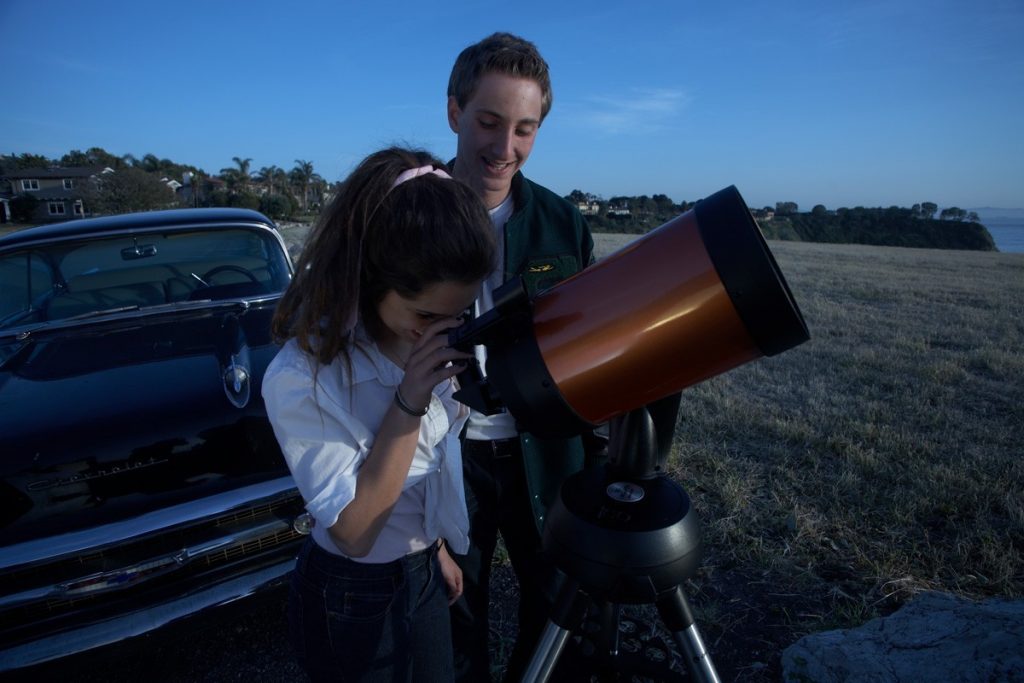
To help you out, here are the different types of telescopes:
Refractor Telescopes: Like the Gskyer EQ901000, this type of telescope is the least expensive on the market. They are low in price because they are basic in design and simple in features. They normally use the lens as its objective to form an image, which is simple to understand. If you want a type of telescope that offers little-to-no maintenance, this type if for you. However, they are usually quite heavy and cannot view images in so much detail.
Reflector Telescopes: These telescopes use curved mirrors to be able to form the image you want to see from the skies to your eyes. You’ll want this type of telescope if you’re looking to be able to check out deeper objects in the sky and need high-high-quality images. However, if you are going to be ordering this telescope, you’ll need to know that it will require a lot more maintenance than other low-powered telescopes.
Catadioptric Telescopes: You want the best of both worlds? Well, these type of telescopes are reflectors and refractors, which use not only lenses but also mirrors for making an image. You can get either a Schmidt-Cassegrain or a Maksutov-Cassegrain, which is much thicker and smaller than the Schmidt-Cassegrain.
Once you purchase your telescope, you’ll want to know how to best maintain and care for it—to do so, these tips can help you with caring for your telescope for beginners:
First and foremost, know that dust and moisture threaten to build upon the lens or on the mirror of your new product. Normally, you should reach for a camel-hair brush for some light brushing. These can easily be found in camera shops.
You can also use pressurized air to spray the glass surface so that all the dust air particles are then removed. Top it off with an optical-cleaning solution, and most of the debris will be removed, as well.
Always keep the lens covered while the telescope is not in use—this will help keep it protected from scratches, dirt, and dust. Of course, you won’t be able to totally eliminate all the dirt from the telescope, but the more you can, the better
Definitely avoid storing in a hot place like the car—instead, store your telescope in a safe, cool place that keeps it away from moisture, dust, and accidents.
Especially since astronomy isn’t exactly the cheapest hobby, you won’t want to go broke just by purchasing a telescope. So, make sure that the price tag is within your budget.
There are certain telescopes that will meet a price tag of under $100—however, most of these types of telescopes are simply made for kids and extreme beginners.
However, the most beginner scopes out there, including those on this list, will be in the price range between $300 to $800. However, if you are going to be planning on buying a telescope, you might as well know ahead of time that you’ll be investing.
A portable, lightweight telescope, like any of these on the guide will also be a bit lower on your budget, as well.
Before you buy, it’s important to consider a few features that can help you sort out the best from the rest.
Here are some of the features of the best telescopes on the market:
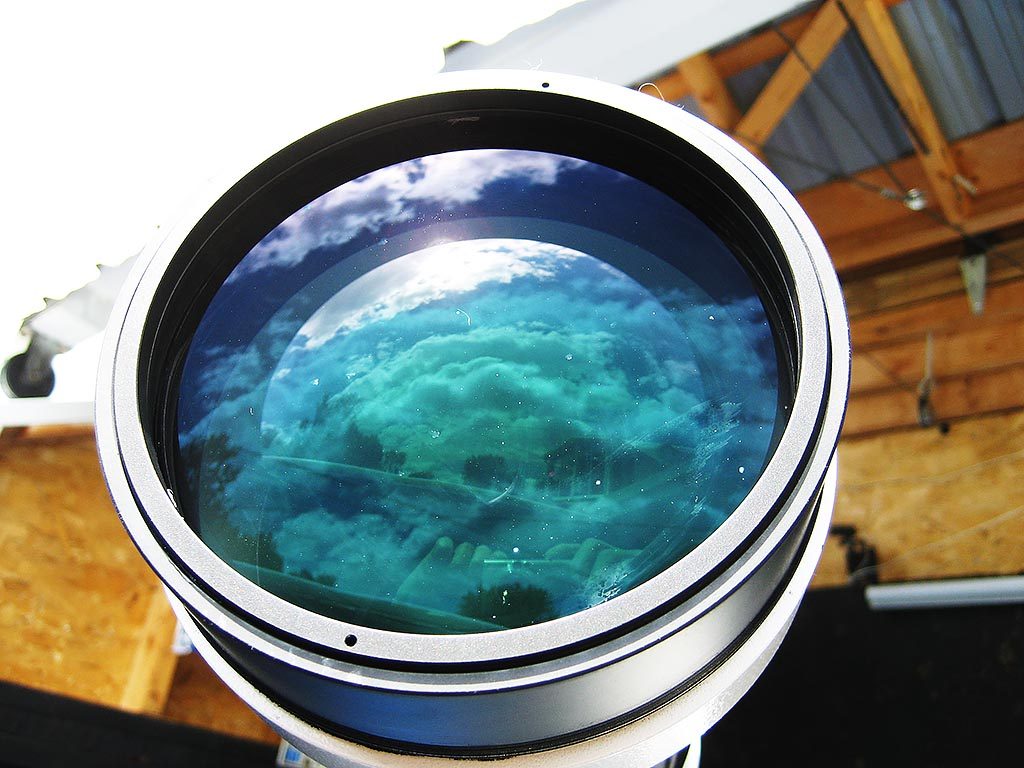
This can make a huge difference because it is coherent with the power of the telescope and how clear the image is—no matter how far the object is away. Unfortunately, most people think that bigger telescopes are always better, but that is simply not the case. Bigger means a more expensive price and a bulkier build.
The aperture you desire is based on what you want to see—and how dark or clear the skies are around it. If you have a larger aperture, you will be able to get a lot of starlight—helping you see much fainter objects. However, especially for a beginner, you might not need such a large aperture.
When you hear the word “focus” in relation to a telescope, you might think that this is the most important feature. If you have a longer focal length, you’ll be able to see celestial objects in a much bigger appearance.
The Celestron NexStar 5 SE is one of the telescopes with the largest focal lengths in our guide today with 1250 mm. However, you will also notice that the majority of these telescopes will have about 700 to 1,000 mm in focal length on average.
Also, when you think of a telescope, the term for “magnification” might run through your mind. That’s because you’ll want to have the object on point as magnified as possible—and the ability to do so.
To take a look at the magnification of telescopes, we will have to focus on two different terms—focal length and the light point. Both of these play large determining factors on the overall magnification of the lens.
Contrary to popular belief, however, magnification doesn’t always necessarily mean a clearer image. You might be able to magnify an object and make it a lot larger than it normally is in your lens, however, the quality might not be the best.
The eyepiece of the telescope also plays a major roll in magnification. The focal length of the telescope and the eyepiece are the two components that determine this final number.
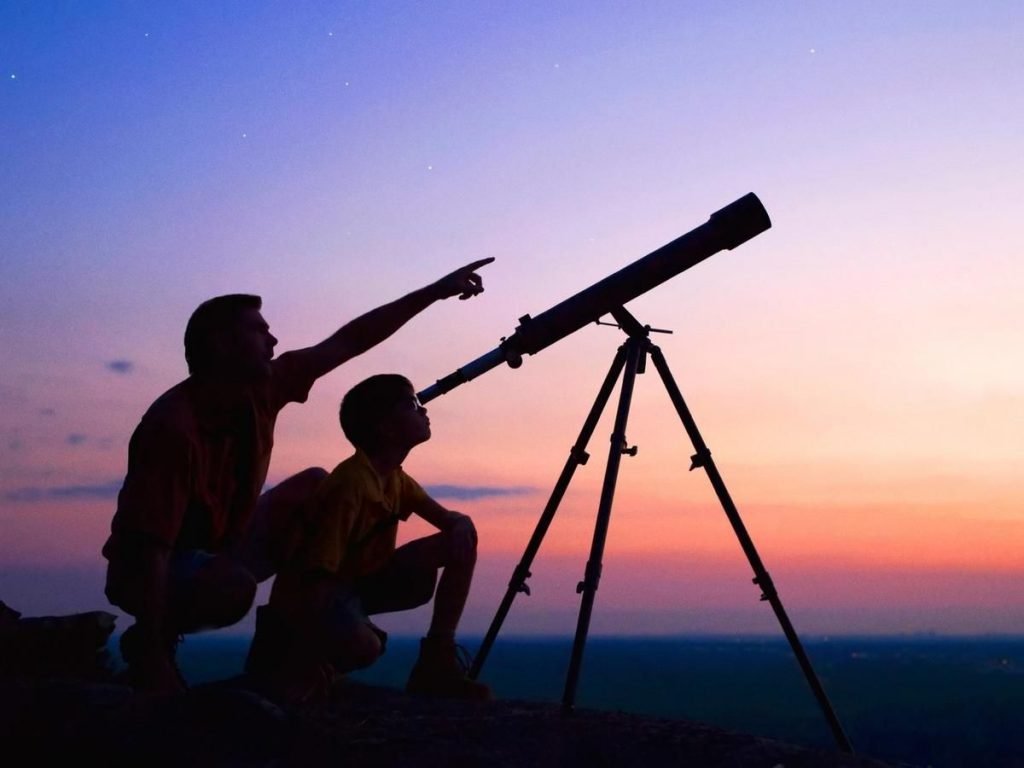
Like most of the telescopes offered here, like the Celestron 21063 AstroMaster 90 is alt-azimuth. The type of mount will be the most important system that helps determine the motion of the telescope and how smoothly it moves while tracking a celestial object.
For example, an altazimuth or an alt-azimuth mount will move vertically and horizontally without the shaking or go-and-stop movement. This is the type of mount you should be looking for if you’re a beginner since it is much easier to use than others and can help work coherently with the included programs that help with tracking celestial bodies—like in the Orion 10015 StarBlast.
Another very important feature in choosing the best telescope for your expert level and desire is the finder scope.
This is the part of the telescope that is mounted on it already when it comes to you pre-assembled. This is the part of the telescope that has that red dot or crosshairs that help with alignment and centering of objects. This will help you pinpoint and locate what you want to see at any given time.
With telescopes, there are various types of scopes, like the refractor scope, which has the light passing through the lens from the front of the scope and moves to the back through a mirror. You can check out objects on earth and in the sky.
The auxiliary lens system is what is wedged between the eyepiece of the telescope and the actual telescope itself. The lens is what is responsible for determining, decreasing and increasing the focal length and magnification of the image you’ll be seeing in your view.
With the lens, you’ll be able to double or triple magnification, however you see fit.
Interestingly enough, the smaller the lens, the more magnification it has.
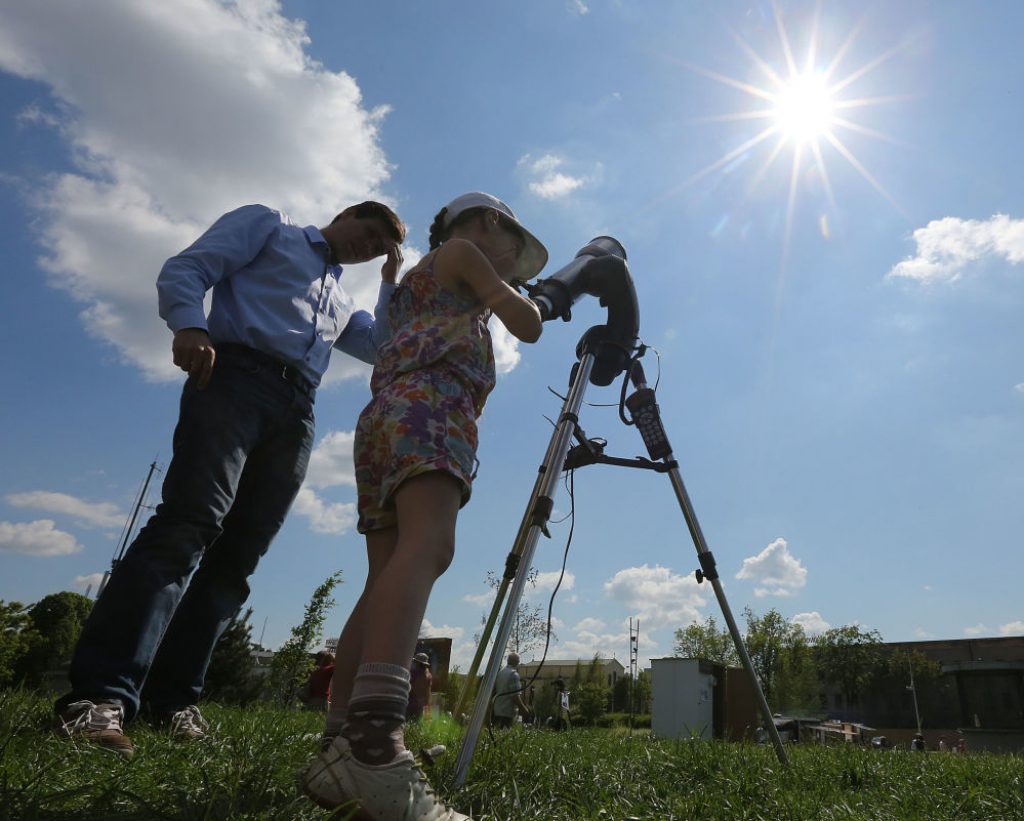
Not only do they differ in number, but they also change depending on magnification and field of view. Fortunately, with the proper maintenance and care, the eyepiece—no matter how many you have—can often last a lifetime and will never have to be replaced.
Especially for beginners, the weight of the telescope can make a huge difference. You’ll want to be able to easily transport the telescope outside and along with you on whatever trip you may be going on. Especially if you are not only carrying it from your car to the ideal spot, you’ll want the set-up process to be simple.
The ToyerBee 100246 is one of the lightest ones on this list, weighing only 6.8 lbs, which is ideally the lightest weight to carry. However, most of the beginner telescopes won’t weigh more than 25-30 lbs at most, which is quite light for a tool to be used to observe and study the night sky.
Depending on the use being served by these telescopes, certain accessories can be ideal for the ultimate viewing experience. An aluminum tripod, for example, that comes along with the ToyerBee 100246 or the stainless steel tripod that holds the Celestron 21063 AstroMaster 90 can be great accessories that come along with the telescope.
Other accessories also include number of eyepieces, a table top base, tripod, and a case.
Most of these telescopes—on the guide and in the market—come with a 1-2 year warranty backed by the manufacturer. Especially since these telescopes are for beginners, they don’t come with all the special materials and equipment used for more advanced models that will most likely increase the warranty.
Knowing how and where they are will definitely help in locating them.
If you’ve skipped out on reading pretty much everything else here on our guide, here are our top three picks:
The Celestron NexStar 5 SE is our Editor’s Choice. As a Schmidt-Cassegrain design, this telescope comes with a focal length of 1250 mm and is backed by a 2-year limited warranty. Not only is it lightweight, weighing only 17 lbs, but also comes with certain features like: a StarPointer finderscope, 40,000+ celestial objects stored, alt-azimuth motorized mount, and is GoTo capable, which helps beginners spot bodies in the sky.
The Celestron AstroMaster 90 is our Best for Amateurs pick. Finding stars is a breeze with this Celestron refractor telescope that features a great 1000 mm focal length and 90 mm aperture.
The Orion 10016 StarBlast 6 is our Best Optical Power pick as the Best Amateur Telescope. This reflector telescope has a 150 mm aperture and a focal length of 750 mm, which is pretty solid as far as beginner telescopes go. It is pretty lightweight at only 23.5 lbs and comes with a wooden tripod, altazimuth mount, EZ Finder II finderscope, and a 1-year limited warranty.
We hope that our guide has helped you pick out your choice from the best telescope for beginners. Enjoy the night sky!
